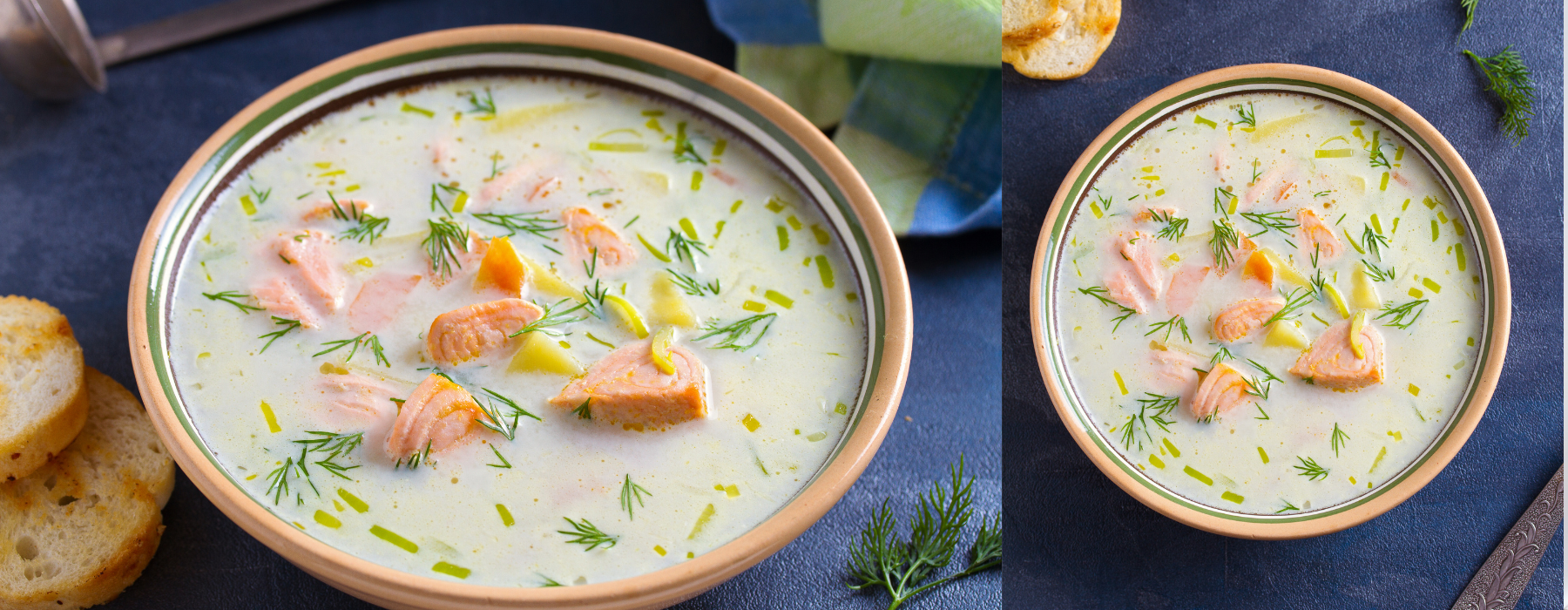Everything You Need To Know About Cooking By Poaching

You’ve mastered grilling, sauteing, baking, and even deep-frying. Now, it’s time to learn about one of the more underrated cooking methods that result in moist and flavorful lean proteins – poaching. We know that the first thing that comes to mind when you hear poaching is poached egg but there’s more to poaching than making delicious eggs to top your avocado toast with.
What is Poaching
Poaching is a moist-heat cooking method like simmering and boiling. The difference between poaching and these two more popular cooking methods is the temperature and cook-time. Poaching cooks at a much lower heat (around 71-82°C) and cooks for longer. While we recommend having an instant-read kitchen thermometer for more precise cooking, a good visual guide to correct poaching temperature is when the water is steaming and very small bubbles rise to the sides of the pan and surface of the water.
Benefits of Poaching
As A Cooking Method
Poaching is a gentle cooking method that’s perfect for lean proteins like poultry breast and pork tenderloin because it cooks the meat well while keeping it moist and flavorful at the same time. If you’ve cooked chicken breast before, you’ll know how easy it is to get dry and tough meat. With poaching, you get the benefit of tender lean proteins that are infused with flavors from your poaching liquid.
Food That Are Commonly Poached
Almost anything and everything can be poached as long as they’re able to hold their shape when cooked for a long period of time. Here are some food that are commonly poached:
- Fish
- Shellfish
- Chicken (or other poultry) breasts
- Beef
- Pork Tenderloins
- Eggs
- Vegetables like asparagus
- Fruits like pears and apples
Poaching Liquids
In theory, you can poach food in plain water but there’s no reason to do so. Your poaching liquid infuses your food with so much flavor that it’s important to make one that compliments what you are poaching. Usually the poaching liquid is infused with aromatics from herbs like rosemary and basil, and acid in the form of vinegar, lemon, or wine. Here are some ideas on poaching liquids you can use:
Water and salt
- Wine
Milk – you can even use coconut milk - Stock – chicken, beef, seafood. We recommend using Knorr Broth Cubes as a quick yet flavorful alternative.
- Miso Broth
- Court Bouillon
- Beurre Monté
Poaching Techniques
There are specific poaching techniques that’s applicable to the type of food you’re cooking. There’s the shallow poaching technique and the deep poaching technique, both of which imparts excellent flavor and retains moisture in the food. For both methods, it’s recommended to place a buttered parchment round on top of the protein to ensure that the food remains submerged in the liquid.
Shallow Poaching Technique
The shallow poaching technique doesn’t completely submerge the food in the liquid. Instead, it’s only partially submerged. This technique is perfect for when you’re cooking with either smaller pieces of protein, cubed pieces of meat, or boneless proteins. For this method, you need a shallow pan with a tight lid. The pan is then coated in butter and shallots. Afterwards the cold poaching liquid is added followed by the seasoned protein and the buttered parchment round on top. This technique can be finished on the stovetop or inside an oven. Just make sure that the lid fits tightly on top to ensure even cooking. A bonus from this poaching technique is that the liquid can be reduced to make a sauce for the poached dish.
Deep Poaching Technique
Deep poaching is probably what comes to mind when most people think of poaching. This technique is suitable for larger proteins as it’s cooked completely submerged in liquid. Similar to shallow poaching, the poaching liquid must be cold or at room temperature before adding protein into it to ensure gentle cooking.
An interesting variation of the deep poaching technique is using butter or oil. Instead of using other liquids, protein is submerged into these fats at a low temperature. This variation is perfect for tender and lean proteins such as fish, lobster, chicken breasts, scallops, and even pork tenderloin if initially seared before submerging in fat. Food poached in butter or olive oil imparts texture and flavor that’s out of this world and is worth making at home for those special occasions.
Recipes that Use the Poaching Technique
They say that the best way to learn is through practice. The same goes for poaching. You learn this cooking technique best through practice! Here are some recipes we recommend trying out to get started on your poaching journey:
Of course, no poaching article is complete without the mention of poached eggs so here’s an article that teaches you the tips and tricks to make perfect poached eggs every single time.
Armed with all this knowledge and recipes, you’re well on your way to create delicious, moist, and flavorful food made by poaching.
Suggested Article

Japanese Natto: A Quick Guide
